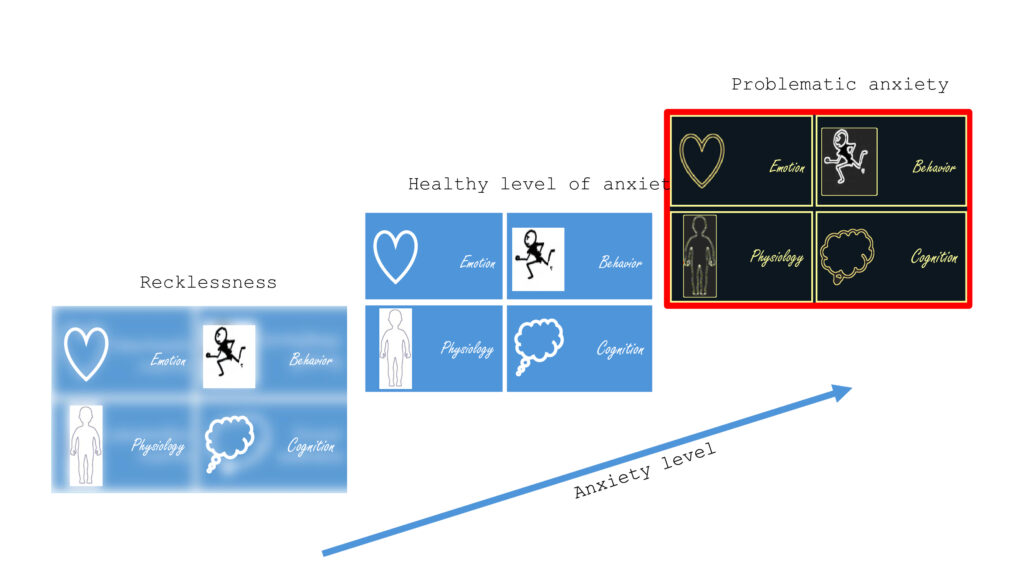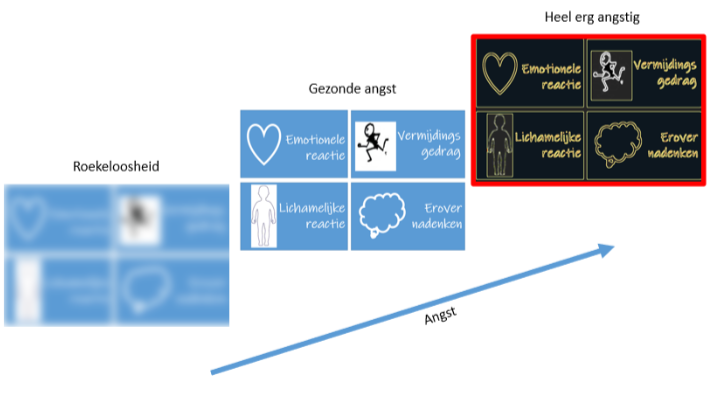1. The emotion; you experience fear.
2. The physical reaction; your heart starts beating faster, etc.
3. Avoidance behavior; you quickly flee from danger.
4. Thinking about it: You start thinking about the frightening situation.


If there is too little fear, the four components of fear are not present or are not present enough and you speak of recklessness. With too much fear, the four components of fear are excessively present. The aim of this website is to promote the identification of excessive anxiety in children.
You can further check whether there is problematic anxiety by talking to the child. Pay attention to their emotions. Seek professional help in a timely manner. Completing questionnaires, such as the YAM-5, helps to detect anxiety.